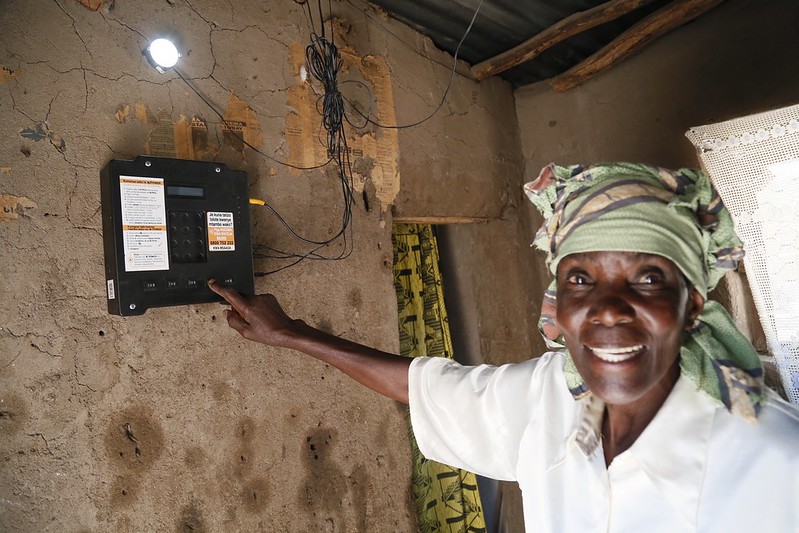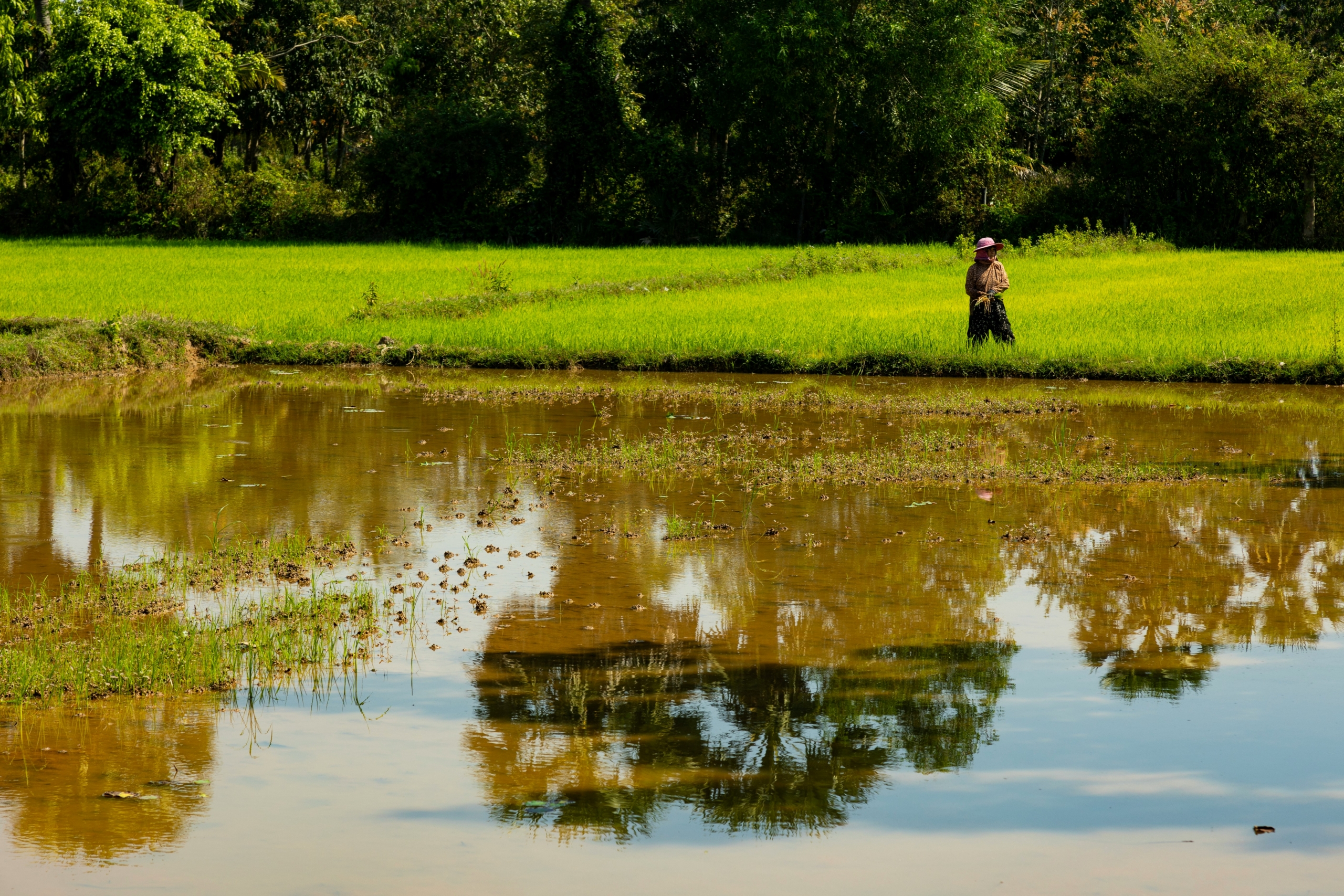 In drought-stricken regions, access to clean water remains a critical challenge. The lack of water affects health, agriculture and everyday life. A technology is offering a new path forward: atmospheric water generators (AWGs). Companies such as Majik Water in Kenya are using this innovation to extract moisture from the air, creating a reliable water source where traditional systems fail. Here is how AWGs function, highlighting real-world success stories and examining their potential for reshaping water access in vulnerable regions.
In drought-stricken regions, access to clean water remains a critical challenge. The lack of water affects health, agriculture and everyday life. A technology is offering a new path forward: atmospheric water generators (AWGs). Companies such as Majik Water in Kenya are using this innovation to extract moisture from the air, creating a reliable water source where traditional systems fail. Here is how AWGs function, highlighting real-world success stories and examining their potential for reshaping water access in vulnerable regions.
Atmospheric Water Generators
AWGs are machines that produce water by extracting humidity from the air. The system draws in air and cools it to trigger condensation. After condensation, the water passes through multiple filters that purify it for safe human consumption. These machines come in different sizes. Some are designed for households or small communities. Others, particularly industrial-scale units, generate several thousand liters of water daily—enough to support entire villages or farming operations.
The Impact on Arid Communities
Atmospheric generators have a profound impact on communities living in arid areas. First, regular access to safe drinking water significantly improves public health by reducing water-related diseases, especially among children. The water produced can also be used to irrigate small local crops, allowing families to grow their fruits and vegetables, thus enhancing food security.
Economically, these generators create new jobs related to their maintenance, supervision and water distribution. This stimulates local economies, often constrained by scarce natural resources. By providing a water source independent of rainfall, the generators are strengthening the resilience of villages to changing weather patterns and prolonged droughts.
For example, in Kenya, Majik Water uses air generators to provide drinking water to drought-affected rural communities. This project has improved the living conditions of many families, proving that this technology can be a real lifeline in even the most hostile environments.
Challenges to Overcome
Despite their potential, AWGs present several challenges. The machines require an initial capital investment that is beyond the reach of many communities. In areas without reliable electricity, powering the machines can become a problem. In addition, their efficiency drops in environments with extremely low humidity, limiting water output in the driest areas. These obstacles highlight the need for supportive infrastructure and financing mechanisms. Solar-powered AWGs could offer one possible solution to the energy constraint. Government subsidies or nonprofit funding may also be necessary to make these systems accessible in low-income regions.
Looking Ahead
Atmospheric generators represent a promising innovation to address water scarcity in arid regions. By providing an independent and reliable source of drinking water, they improve the quality of life, support local agriculture and empower communities in the face of climate change. However, widespread adoption potentially depends on efforts to lower costs, increase energy efficiency and integrate AWGs into broader development policies. With the support of public policies and private initiatives, this technology could play a key role in the future of sustainable water management.
– Eléonore Bonnaterre
Eléonore is based in London, UK and focuses on Technology and Solutions for The Borgen Project.
Photo: Flickr
 Emirates Airline, based in Dubai,
Emirates Airline, based in Dubai,  In 2023, Husk Power Systems, an Indian-origin company,
In 2023, Husk Power Systems, an Indian-origin company,  For decades, the Maldives has been an oasis of
For decades, the Maldives has been an oasis of  Electric vehicles are transforming transportation in India, offering a cost-effective and environmentally friendly alternative to traditional fuel-powered vehicles. With India ranking as
Electric vehicles are transforming transportation in India, offering a cost-effective and environmentally friendly alternative to traditional fuel-powered vehicles. With India ranking as 
 Jordan has been experiencing food insecurity challenges due to
Jordan has been experiencing food insecurity challenges due to The socio-economic and political crisis in Venezuela has forced
The socio-economic and political crisis in Venezuela has forced  Asthma is a far-reaching condition that affects many people’s breathing ability. Patients typically use inhalers to treat their symptoms. Unfortunately, only 6% of patients know how to use an inhaler to its fullest potential. As a result, only half of all asthma inhaler users manage their symptoms. However, with smart inhalers being developed there
Asthma is a far-reaching condition that affects many people’s breathing ability. Patients typically use inhalers to treat their symptoms. Unfortunately, only 6% of patients know how to use an inhaler to its fullest potential. As a result, only half of all asthma inhaler users manage their symptoms. However, with smart inhalers being developed there  University of Southern California (USC) has a course called “Innovation In Engineering and Design for Global Crises.” As part of the class, a team of USC undergraduates visited the Moria refugee camp to learn from and engage with the displaced peoples about their experiences. The need for more livable housing was the impetus for students’ project development. The result was Torch Tile — an adaptable, low-cost, user-friendly
University of Southern California (USC) has a course called “Innovation In Engineering and Design for Global Crises.” As part of the class, a team of USC undergraduates visited the Moria refugee camp to learn from and engage with the displaced peoples about their experiences. The need for more livable housing was the impetus for students’ project development. The result was Torch Tile — an adaptable, low-cost, user-friendly 